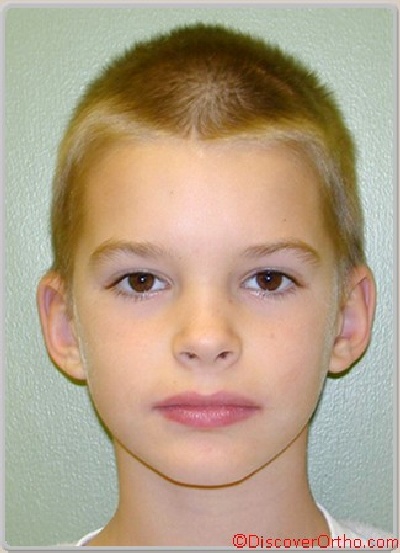






Facial Exam
Facial Proportions
Calculating the facial proportions is an important tool to assess the relationship of the different parts of the facial complex in relation to one another in the vertical dimension. Facial proportions will vary during growth with the lower face developing more vertically.
Although the size of facial bony structures varies, facial proportions remain constant in normocephalic patterns.
This means that studying the facial proportions and understanding the etiology of the observed discrepancy will guide the practitioner in formulating a proper diagnosis and consequently a better treatment plan. Remember that an attractive face regardless of its type will respect certain proportions.
Calculating the facial proportions
Total Face Height (TFH)
Measure the distance from the Glabella, which is the midpoint between the eyebrows, to the Menton (Me), which is the lowest point of the chin, to obtain the total face height. The total face height will be used as reference to calculate the proportions between the upper and lower facial heights.
Upper Face Height (UFH)
Measure the distance from the Glabella (Gl) to the Subnasale to obtain the upper face height. This measurement relates to the dimension of the orbits and maxilla and will be greatly affected by the vertical growth of the maxilla.
Lower Face Height (LFH)
Measure the distance from the Subnasale to the Menton to obtain the lower face height. This measurement relates principally to the vertical dimensions of the upper dento-alveolar process and the mandible.
Facial Proportions
To obtain the facial proportions divide the total face height (TFH) by the upper (UFH) and lower face heights (LFH). The normal proportion for a child is about 50:50, while an adult’s face typically has a proportion of 55:45.
Facial Proportions Comparison
Facial Type UFH LFH Proportion Total
Brachycephalic normal shorter UFH > LFH decreased
Normocephalic normal normal UFH = LFH normal
Dolychocephalic long longer UFH < LFH increased
Facial proportions are fairly constant during growth except in dolychofacial patients who will show a fairly dramatic increase in lower face height. This increase is caused by the vertical maxillary growth pattern during the pubertal growth period. Clockwise rotation of the mandible will displace the chin vertically and distally. This situation is almost impossible to correct with simple orthodontic treatment. Even comprehensive treatment may not result in the complete correction of the problem.